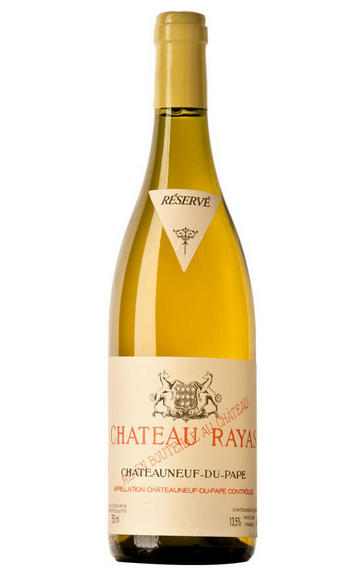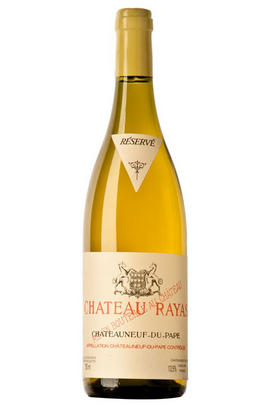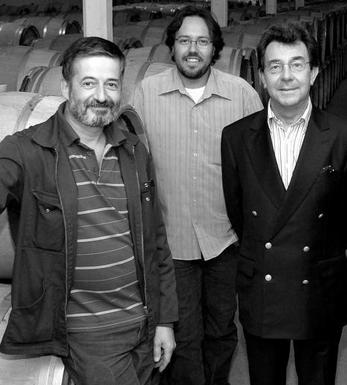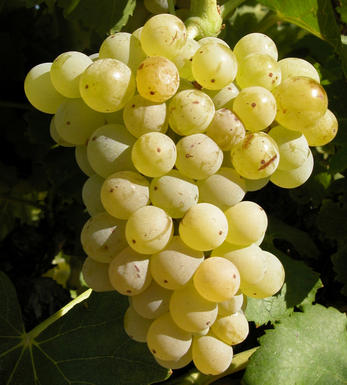
2006 Châteauneuf-du-Pape Blanc, Château Rayas, Rhône

Critics reviews
Robert M. Parker, Jr. - 30/10/2008
About this WINE

Château Rayas
Jacques Reynaud, who died in 1997, was one of the true characters in Châteauneuf. A notoriously shy and private man, he was known to avoid appointments by hiding in ditches that lined the rutted driveway leading to his château. However, he was recognised as one of the world's greatest winemakers and the legacy of Château Rayas is now continued by his son François.
So many practices here seem to run contrary to other producers in Châteauneuf - the 13 hectares of vines are north facing and contain none of the fabled "galets roulés". Only Grenache is used and yields at around 15hl/h are ridiculously low. Almost uniquely the wines are matured in the now rarely seen 450 litre "double-piéce" oak casks. These are substantial and exotically rich wines that are quite literally unique.

Châteauneuf-du-Pape
The most celebrated village of the Southern Rhône, Châteauneuf-du-Pape is the birthplace of the now indispensable French Appellation d’Origine Contrôlée system – imperfect though it may be. Compared to the Northern Rhône, the vineyards here are relatively flat and often feature the iconic galet pebbles – the precise benefits of which are a source of much debate. Minimum alcohol levels required by the AOC are the highest in France, but at 12.5% it is well below the natural generosity of Grenache, which only achieves its full aromatic potential when it is fully ripe and laden with the resultant high sugars. Syrah and Mourvèdre contribute the other defining elements in the blend, adding pepper, savoury spice and structure to the decadent Grenache. There are a further 10 permitted red grape varieties which can be used to adjust the “seasoning”. Of the five white varieties permitted, it is Grenache Noir’s sibling – predictably perhaps – Grenache Blanc, which dominates, though Roussanne shows a great deal of promise when handled well, notably at Château de Beaucastel.

White Rhône Blend
With the exception of the wines from Condrieu and Château-Grillet virtually all Rhône Valley whites are made from blends.
In the north, the white wines of Hermitage, Crozes-Hermitage, St-Joseph, and St-Péray are produced from blends of Marsanne and Roussanne. Generally Marsanne is the dominant partner and it lends colour, body and weight to the blend, as well as richly scented fruit. Roussanne, a notoriously low yielder and pernickety to grow, produces intensely aromatic wines which contribute bouquet, delicacy and finesse to the blend.
Until about 15 years ago there was very little interest in southern Rhône whites as it was widely believed that the combination of dull non aromatic grapes and the baking summer heat meant quality wine production was nigh impossible. Since then the quality has improved markedly through the introduction of cool fermentation techniques and increased plantings of northern Rhône white grapes.
The base of many blends is still Grenache Blanc, a widely planted variety producing fresh wines with apple-like fruits, often with hints of aniseed. Ugni Blanc is still found in many blends, as is Clairette though their general lack of character and definition has led to a reduction in plantings. The future for southern Rhône whites appears to lie with Roussanne, Marsanne, and, increasingly, Viognier.


Buying options
Add to wishlist
Description
The stunning 2006 Rayas Chateauneuf du Pape Blanc possesses aromas of acacia flowers, honeysuckle, melon, quince, and orange marmalade. Amazingly, this brilliant example of white Chateauneuf du Pape should last for 10-20 years..
Robert M. Parker, Jr. - 30/10/2008
wine at a glance
Delivery and quality guarantee